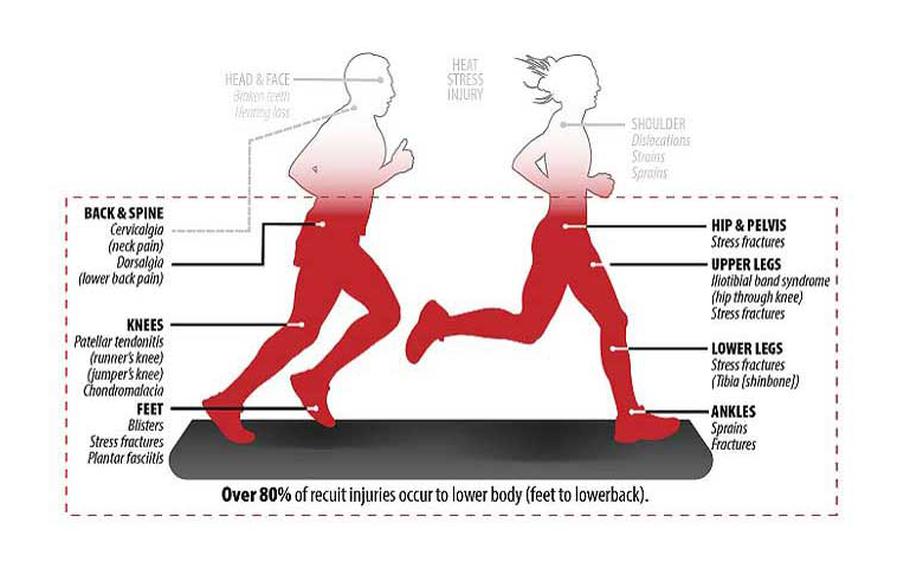Community News
Reduce your risk of running and sports injuries
Health.mil August 21, 2018

()
In the last year, more than half of all Soldiers were diagnosed with an injury. Those injured are usually treated through outpatient visits but may be severely limited in their ability to perform certain physical activities for weeks or months. In some cases, injuries even result in medical discharges from the Army.
Running is the number one cause of Soldier injuries
Two-thirds of Soldiers' injuries are musculoskeletal damage to a lower-extremity (i.e. the knees, ankles, lower legs and feet). Most are common cumulative conditions called overuse injuries. Overuse injuries occur over several hours, weeks or months from repeated low intensity forces to muscles, bones, joints, tendons and ligaments. Common overuse injuries include knee pain syndrome and chondromalacia ("runner's knee"), Achilles tendinitis, low back pain and stress fractures. Overuse injuries are the most frequent "injury problem" within the Army, costing billions in medical care and lost duty time. These injuries result from the substantial load bearing (i.e. on-foot) physical training conducted by Soldiers. "Running is the primary activity that contributes to the injury problem among Army recruits and Soldiers," explains Tyson Grier, a kinesiologist in the Injury Prevention Division of the Army Public Health Center. "Other activities such as foot marching further add to the stress on the lower body, increasing injury risk."
So is running bad for you? The simple answer is "no." Running is a very effective way to improve aerobic fitness – and being aerobically fit has been proven to reduce one's risk of injury. For example, recent data show that Soldiers who have slow 2 mile run times (i.e., men who take more than 15 minutes and women who take more than 19 minutes) have a higher risk of injury. Even Soldiers who "look" fit and are within body fat standards have a higher injury risk if they run slow.
So, though scientific studies have determined excessive running can increase injury risk, the right amount of running is still an effective way to improve and maintain aerobic fitness and resilience against injury. The key is finding the right balance. To reduce your risk of overuse injury:
•Mix up your training. Follow a training regimen that balances running with other aerobic exercises (swimming, biking, stationary elliptical or bike machines), strength training (resistance bands, plyometric or weight-training), speed and agility (e.g. shuttle runs), and balance work.
•Avoid running on repeated days. Alternate with low impact exercises.
•Use running shoes in good condition. Most people only need a comfortable, non-worn running shoe that fits. "As general guidance, replace running shoes every 300-500 miles or if any part of the sole starts to wear" recommends Grier. Evidence has not supported the value of "special" running shoes (control, arch, cushion or minimalist).
•Take a load off your feet. Ruck marching should not be used as an alternative to running. Carrying a heavy load long distances contributes to lower extremity injury. Avoid long runs and distances marches on back-to-back days.
•Pay attention to pain. Pain, especially in a joint (knees, ankles, hips) or bones (shins, feet) can mean you are increasing distance or frequency too quickly. If this is the case, the first step is to reduce running or consider an alternative exercise. If pain persists, seek medical evaluation.